Painting is a great way for anyone to express themselves and explore their creativity. From mixing colors to creating unique designs, painting can be enjoyable and therapeutic. Oftentimes, getting started is the hardest part! If you're looking for some inspiration, we've got you covered with fun and easy painting ideas that are perfect for kids and beginners of all ages.
From using simple paper plates as a canvas to painting with natural materials like rocks and leaves, these ideas will get the creative juices flowing in no time. Regardless of skill level or the supplies you have on hand, there's something here that's sure to excite the artist within. Plus, these projects are super affordable and can be easily adapted to fit different ages.
So grab those paintbrushes and let's get creative! These fun and easy painting ideas are sure to bring out the inner artist in everyone.
Choosing the Right Supplies

Painting can feel like an intimidating art form to tackle, but it doesn't have to be! With the right supplies and workspace, you can easily create beautiful pieces of artwork. To get started, let's look at the materials used for painting - paint brushes, paint colors, canvas boards, painting surfaces, and easel stands.
Paint brushes are the most important tool when it comes to painting. They come in various sizes and shapes, so you'll need to choose the one that fits your project best. For small details or thin lines, use a fine-tipped brush; if you're looking for broad strokes of color or thick lines, opt for a thicker brush head.
Paint colors should also be carefully selected. You can go with traditional hues such as browns and blues or branch out into more vibrant shades like yellows and greens. In addition to those choices, there are a variety of specialty paints available in many different finishes. Canvas boards provide a nice surface for your artwork and come in different sizes depending on what you're creating; painting surfaces like wood panels or stretched canvases are great options too! Finally, an easel stand is essential if you’re planning on standing up while working - they come in all sorts of styles too!
Preparing The Workspace
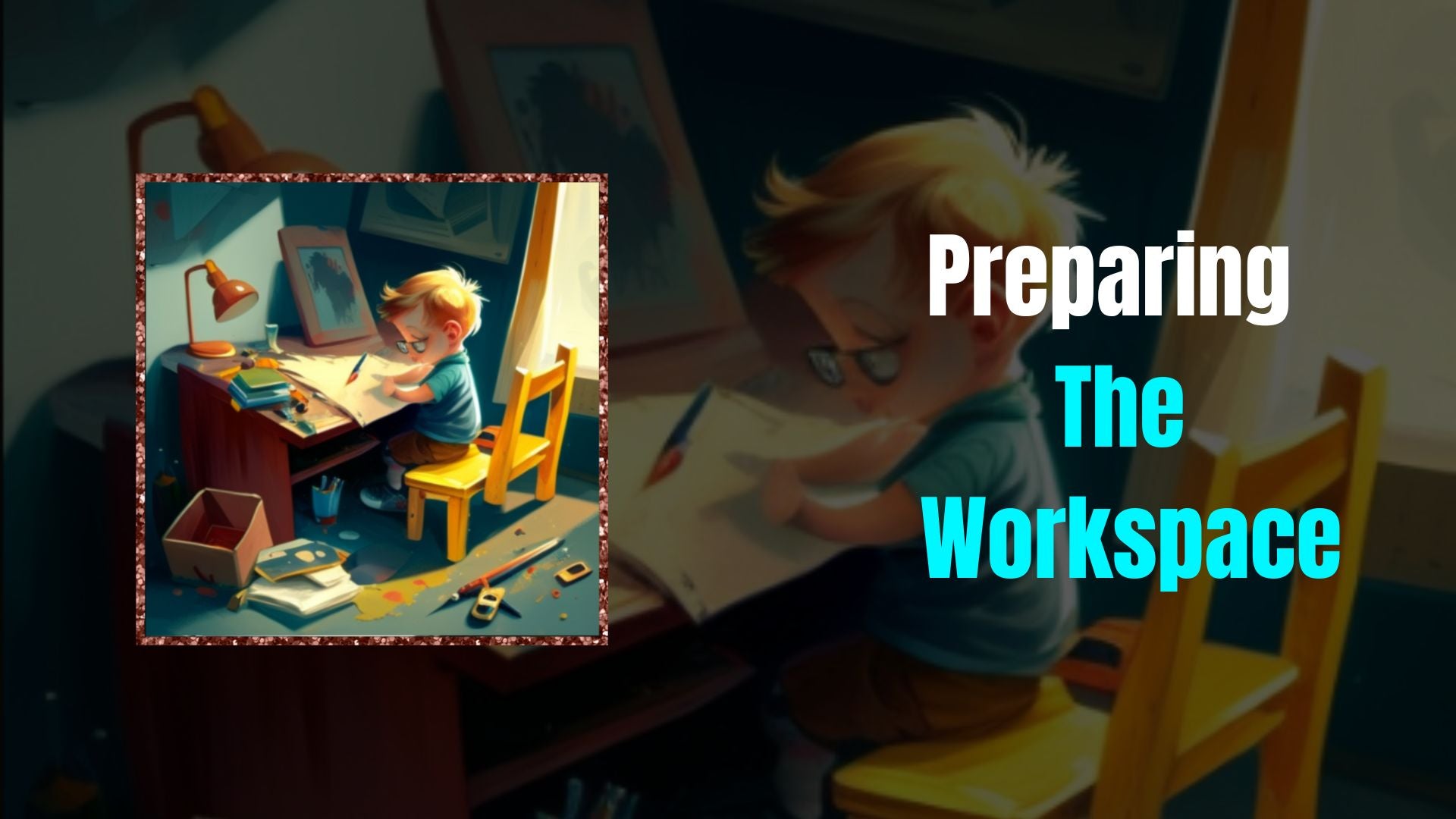
Now that you have the right supplies, it's time to prepare your workspace. This is an essential step in making sure your painting project is successful and enjoyable.
Here are some things to consider when prepping your workspace:
- Safety Precautions:
- Keep all art supplies away from pets and small children.
- Make sure any sharp tools, such as scissors or knives, are out of reach for safety reasons.
- Put down plastic sheets or newspaper to protect furniture from spills or messes.
- Supply Organization:
- Have all the necessary supplies within reach while you're painting.
- Have enough space around the project area so that you don’t feel cramped or overwhelmed.
- If possible, try to do the project outdoors or in a well-ventilated room.
Having a well-prepared workspace will help ensure that your painting projects go smoothly without any surprises along the way. By following these simple tips, you can create an inspiring setting where anyone can make creative masterpieces! With your workspace ready to go, let's move on to how to create simple object drawings.
Simple Object Drawings
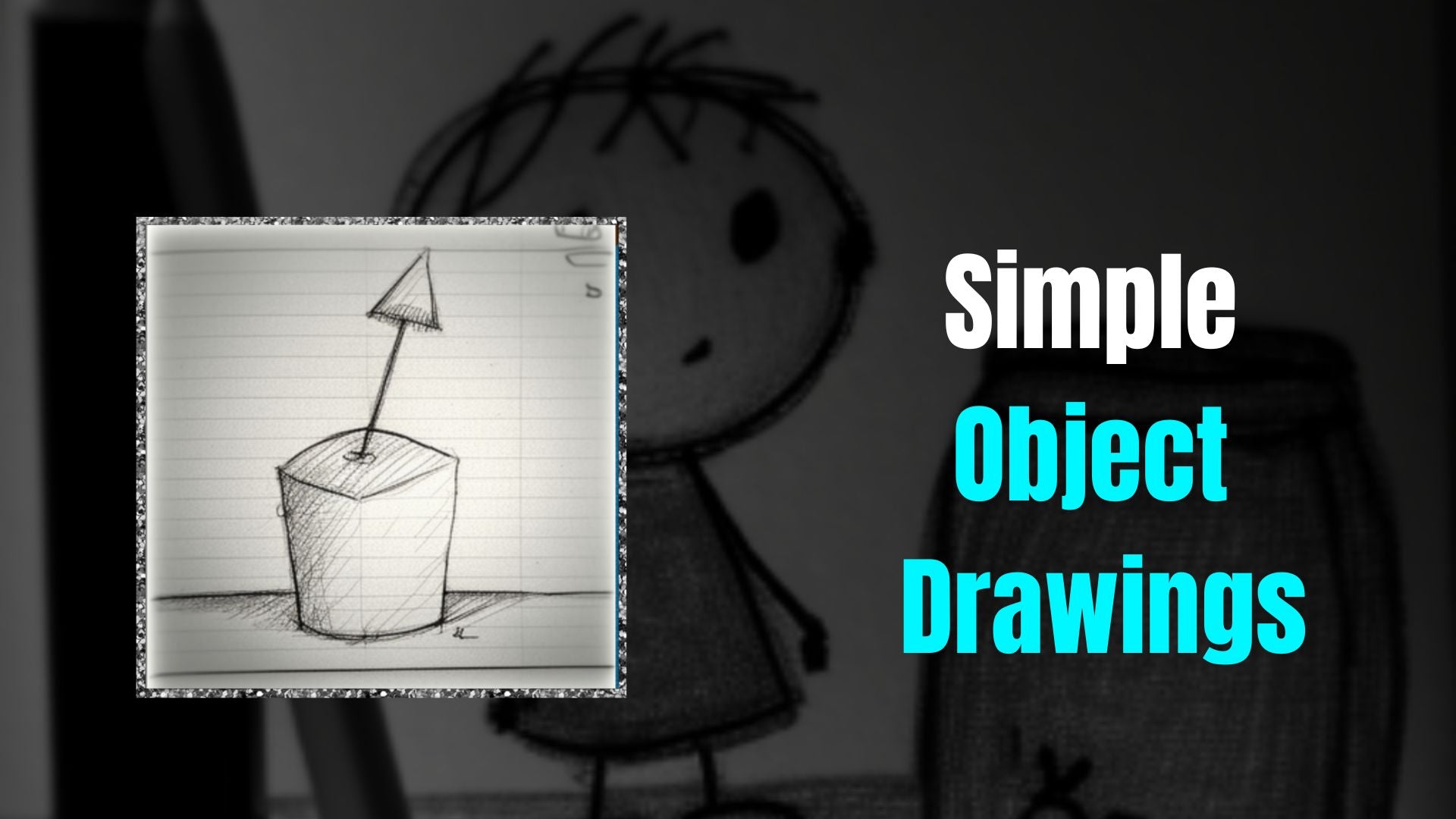
Drawing simple objects can be a great way for beginners to start exploring the basics of art and develop their skills. Learning to draw simple objects such as fruit, animals, and everyday items can help boost confidence in the budding artist, while also teaching them different techniques of shading, highlights and more.
When it comes to drawing simple objects for kids and beginners, there are several easy steps they can take. First, sketch out the basic shape of the object you want to draw. This will be the foundation of your drawing so use light lines at first until you get the desired shape. Then add details such as shadows and highlights with darker marks or colors if you’re using a medium such as paint or markers. Once these are done, it’s time to add finer details like facial features or fur on animals. In addition to following these steps, make sure there is plenty of space when drawing - this is especially important for kids who have smaller hands or may not be able to control their motions as well yet. A large piece of paper or canvas can help keep things organized and let you move freely without having to worry about smudging already drawn lines. Finally, practice makes perfect! Keep drawing lots of different simple objects in order to build up your technique and gain confidence in your ability as an artist!
Abstract art projects often require more advanced techniques but don't let that intimidate you; with some practice anyone can create stunning works of art!
Abstract Art Projects

Abstract art projects can be a great way for kids and beginners to explore the world of painting. Not only is it fun and creative, it also encourages experimentation and helps to develop artistic skills. Abstract painting ideas can range from simple shapes to complex compositions. By exploring different abstract painting techniques, kids and beginners can create visually interesting pieces that represent their personal style.
Abstract painting for kids is especially great because it allows them to express themselves without having to worry about making mistakes or not meeting certain standards. This makes it a great way for children to develop their creativity without feeling overwhelmed or discouraged. Kids will also learn how to use color, shape, texture, line, and other elements to create unique works of art.
There are many tutorials online that provide helpful abstract painting tips and techniques. These tutorials are perfect for those who are just starting out in the world of abstract art. They offer step-by-step instructions on how to create various types of abstract paintings. From basic shapes and colors to more complex compositions, these tutorials will help anyone learn how to create beautiful abstract artwork with ease.
Finger Painting Techniques
Finger painting is a great way for kids and beginners to get creative! It's easy and fun, so the whole family can join in. Start by gathering all your supplies: some washable skin-safe paints, paper, a few paintbrushes, and something to cover the table with, like old newspapers. When you're all set up, let your imagination run wild!
Finger painting is a great way to explore texture and dimension on the canvas. Use different colors of paint to create layers or swirls. You can also use just one color for an even deeper effect. Experiment with mixing colors too - try blue and yellow to make green or mix red and white to get pink! For more advanced techniques, practice making lines with your fingers instead of a brush. This will give you greater control over how much paint is used and what kind of pattern it forms on the paper.
When you're done finger painting, make sure everything gets cleaned up properly! Wash hands thoroughly and remove any paint from brushes before storing them away. With these tips in mind, finger painting can be an enjoyable activity for kids and adults alike!
Acrylic Paint Ideas
Let's jump in with both feet and explore the world of acrylic painting! Acrylics are a great way to get creative with kids and beginners, as they provide a rich, vibrant color that can be used to create anything the mind can imagine. Plus, they don't require any special equipment or tedious setup - just some thick paper, cardboard, or canvas and acrylic paint! Here are some acrylic painting ideas to get your creative juices flowing:
- Try mixing different colors together! Experiment with different combinations until you find one that looks just right.
- Create an abstract painting by using only one color. Let your imagination run wild as you add texture and shapes to your painting.
- Paint something from nature, like a landscape or flower. Observe the details of each item before you start and use bright colors for extra fun!

Acrylic paints can also be used for more intricate projects, such as creating signs or making personalized gifts. With a little bit of practice and patience, anyone can learn how to use acrylic paints for their unique projects. There are plenty of tutorials online that explain the basics of acrylic painting techniques, such as shading and blending colors. Additionally, there are tons of amazing acrylic painting projects out there that will help take your artwork up a notch! Painting with acrylics is an enjoyable activity that encourages creativity while also teaching valuable skills like problem solving and self-expression.
No matter how you choose to use them, acrylic paints offer endless possibilities for artistic exploration! From easy paintings that don’t require too much skill to complex masterpieces, this medium can bring out the artist in anyone. Now, let's move on to watercolor explorations - another great option for those looking to express themselves creatively!
Watercolor Explorations
Watercolor is a great medium for kids and beginners. It's easy to use, and it produces beautiful results with even the simplest techniques. Exploring watercolor can be incredibly rewarding and fun! Here are a few ideas to get you started on your watercolor explorations.
First, experiment with brushwork. Try layering strokes of different sizes and shapes, or painting in wet-on-wet or wet-on-dry styles. This will help you understand how the paint works, giving you more control over the results of your paintings.
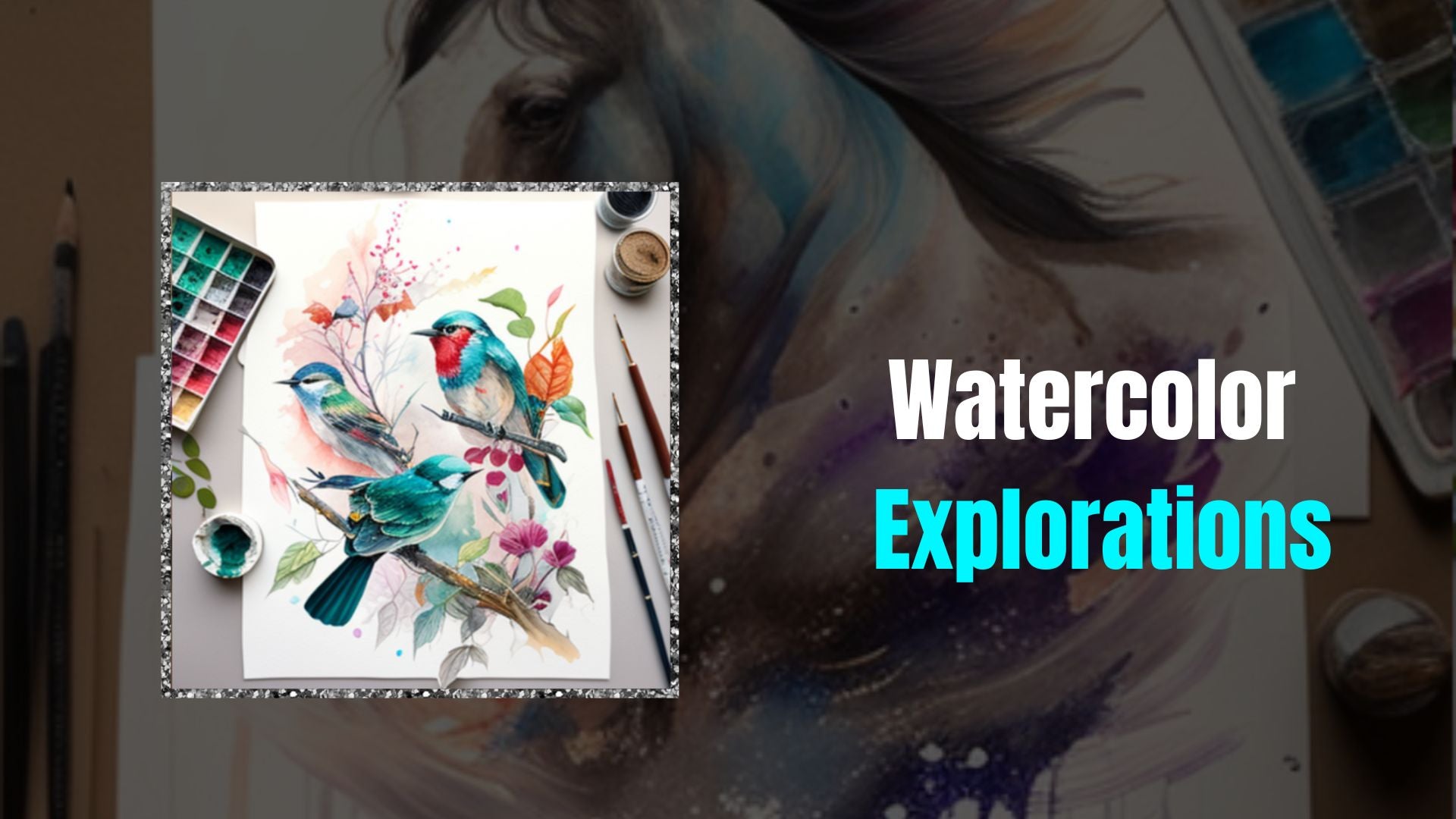
Second, explore color mixing possibilities. With watercolors, you can create an infinite range of hues by simply combining two or more colors on your palette. You don't need a lot of experience to start mixing colors - just look at the combinations that already exist in nature and go from there!
Finally, have fun with painting textures. Watercolor can produce interesting textures like ripples and splatters that add depth and visual interest to your work. Experimenting with different kinds of paper will also give you unique effects - try both cold press and hot press papers for even more options! As you practice these techniques, you'll discover all sorts of creative ways to use watercolor in your artwork.
With these tips as a starting point, it's time to dive into color mixing basics!
Color Mixing Basics
Mixing colors is like making pancakes. You need to mix the ingredients in the right proportions to get the desired outcome. Color mixing for kids and beginners can be fun and easy if you have the right tools and techniques. In this section, we will explore some of the basic color-mixing techniques and tools that will help you create perfect shades.
First, let's talk about mixing tools. As a beginner, all you will need is three basic supplies - a palette, a palette knife, some brushes, and paints. A palette is used to mix your paints with the palette knife, while brushes are used to apply them on canvas or paper.
Next, let’s explore how to blend colors together. Combining shades can be tricky but it does not have to be overwhelming. Start by understanding how different hues interact with each other and practice combining two or three shades at a time until you get comfortable using more complex combinations of color. Your goal should be to create smooth transitions between different hues without any distinct lines or patches of color showing up in your painting.
Once you get better at mixing colors, try experimenting with more advanced techniques such as gradients, tints, tones, and shades, as well as complementary colors. With enough practice and patience, you will soon be able to create beautiful pieces of artwork with ease!
Nature-Inspired Work
Nature-inspired painting is a great way to encourage kids and beginners to explore their creative potential. Outdoor painting allows them to observe and capture the beauty of nature in their artwork. Wildlife art is an especially popular topic for nature-inspired painting, as it encourages kids to observe the fascinating animals around them. Landscape design also provides plenty of opportunity for creativity, as does nature studies, which involve looking closely at small details around them such as plants, rocks, and insects. Kids will discover the wonders of nature and will learn how to reproduce their findings to share with their relatives and friends.
A great project for kids and beginners is to keep a journal in which they keep track of their observations. They can even make the journal themselves, in a simple process of folding several sheets of printer paper in half and stapling the middle to make a book. From there, they can add a binding to protect the journal from the elements. A simple binding of some thick paper, cardboard, or a waterproof material such as up-cycled plastic all work. Use a strong glue to attach the binding to the journal. Now the journal is ready to go! Fill it up with pressed flowers, drawings of insects, colors from squashed berries. This is a project that will bring joy for any artist.
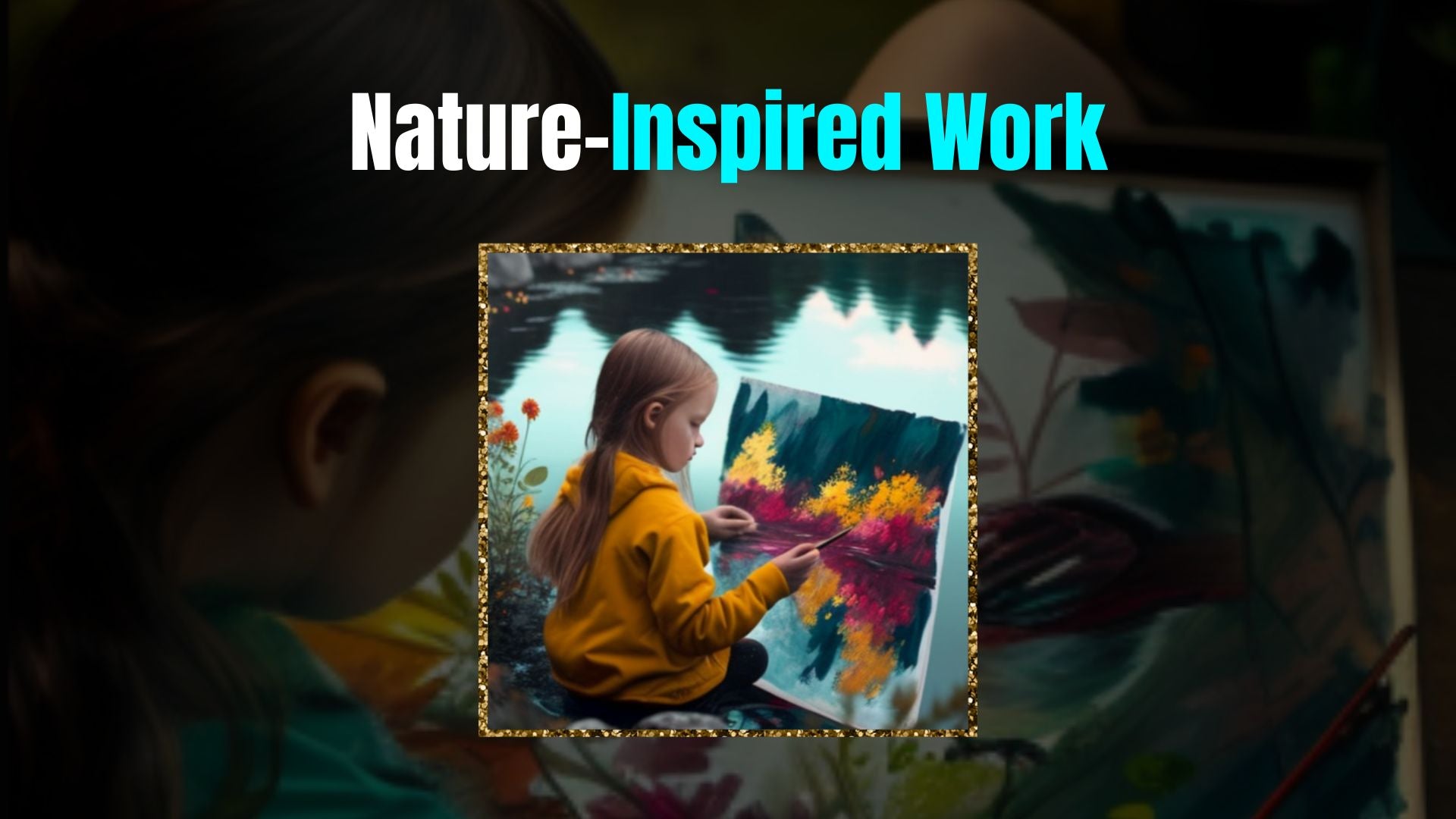
These activities provide an ideal platform for unleashing one’s creative powers while encouraging appreciation of the natural world. Kids can learn how to mix colors, practice brushstrokes, or use different mediums such as pastels or charcoal to express themselves through their paintings. Nature-inspired work gives kids and beginners the chance to come face-to-face with new colors and textures that they can then use in their artwork.
At the end of this project, artists will have created something truly unique! Letting them display their finished pieces is a great way for them to appreciate all their hard work, whether it’s hung up on a wall or simply placed on a shelf for admiration. This step helps reinforce the idea that creativity should be celebrated!
Displaying Finished Pieces
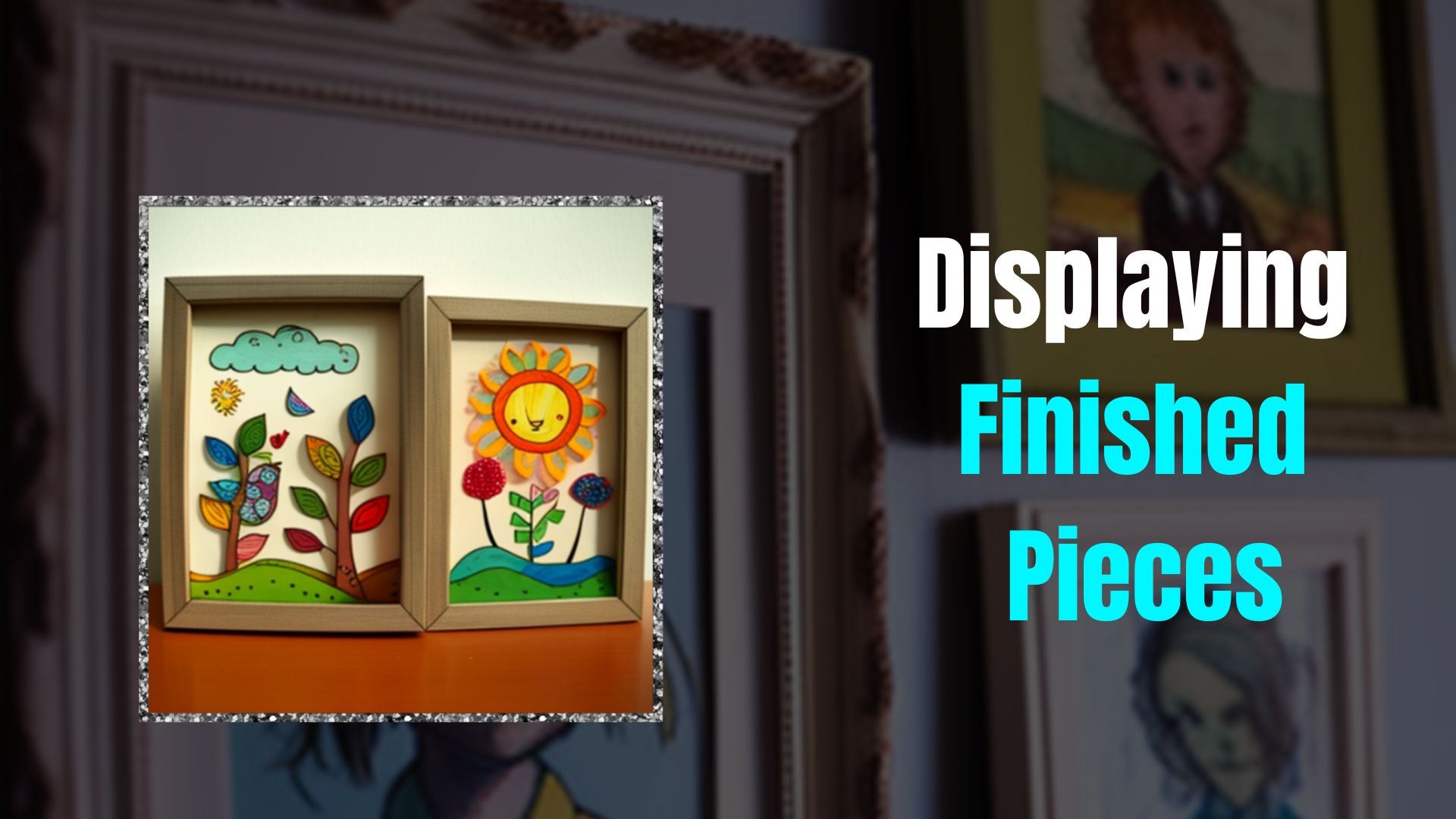
Once you’ve completed your masterpiece, it's time to show off your work! There are plenty of ways to display your beautiful painting. Here are some easy and fun ideas:
- Art Prints: You can easily print your painting onto an art print, or even multiple prints! You can hang them on the wall or add them to a photo frame. This is a great way to showcase the beauty of your designs.
- Wall Hangings: You can also hang your painting directly onto the wall using twine or ribbon. This creates a nice piece that adds texture and visual interest to any room.
- Photo Frames: If you don't want to hang it directly on the wall, you can place it in a photo frame and display it on shelves or other furniture pieces. It's an easy way to keep your artwork safe from damage while still showing it off!
- Display Boards: You can also create a display board with several of your paintings and hang it up as one large piece of art. This is an ideal option if you're looking for something more creative and unique!
No matter how you choose to showcase your work, these ideas will help make sure that everyone will get to appreciate the beauty of your artwork!
Frequently Asked Questions

What Is The Best Type Of Brush For A Beginner?
Painting is a fun and creative activity for both kids and beginners. To make the most of any painting project, it’s important to select the right brush. From size and shape to type and paint, here’s what you need to know about finding your beginner brush:
- Choose the right brush size: A brush that’s too big can be hard to handle; one that’s too small won’t cover the area you want it to. Look for brushes with sizes ranging from 1/2 inch up to 2 inches in width.
- Select a beginner-friendly brush type: There are many different types of brushes available, but for beginners, look for flat brushes or filbert brushes. These have a soft edge that makes them easier to use than other types of brushes like rounds and fan brushes.
- Find a brush suitable for the paint you’re using: Different paints require different types of brushes; acrylic paints work best with synthetic bristles, while oil paints work best with natural bristles like hog or sable hair.
When selecting your beginner brush, consider these three factors—brush size, type and paint compatibility—to find one that will give you great results on your painting projects! With the right tools in hand, you can start creating beautiful works of art in no time!
Is There A Difference Between Student-Grade And Professional-Grade Paints?
When it comes to quality paint, grade differences matter. Student-grade paints tend to be less expensive, less lightfast, and have fewer pigment levels than professional-grade paints. That said, many beginner painters find that student-grade paint is a great place to start since it can still produce beautiful art without breaking the bank. Professional-grade paint is usually recommended for more experienced painters who need higher quality materials and greater color range.
The best type of paint for any painter ultimately depends on their skill level and what they plan to create. For example, if you're looking for vibrant colors that won't fade over time, you'll want to invest in professional-grade paints. However, if you're just getting into painting or are working on a budget, student-grade paint may meet your needs just fine. Ultimately, deciding which type of paint works best depends on your individual painting goals - so explore different options until you find the right fit!
Should I Use a Canvas or Paper for Painting?
When deciding on a painting surface, there are two main options: canvas or paper. Both surfaces can produce beautiful works of art, but they each have unique properties. Let’s explore the differences between these painting surfaces.
Canvas is a sturdy fabric-based material that can provide an even painting surface. It can be stretched to fit frames in various shapes and sizes, making it great for large pieces of artwork. Canvas also absorbs paint better than paper, allowing for more vibrant colors to be used when painting canvas.
Paper is great for creating smaller paintings due to its lightweight nature and flexibility. Paper comes in many forms such as sketchbooks, watercolor paper, and recycled items like magazines and newspapers. Painting on paper also provides a softer look and feel compared with canvas painting.
When deciding which painting surface is best suited for your project, consider the size of the piece you plan to create as well as the type of paint you will use. Canvas might work better if it requires larger pieces or brighter colors while paper is ideal for more delicate work with lighter shades of paint. Whichever you choose, practice makes perfect! Experimenting with both surfaces will help you develop your own style of art over time!
What Type of Surface is Best for Finger Painting?
When it comes to finger painting, there are lots of options available. Finger painting paper works well as it's designed with the right amount of absorbency and texture to help the paint glide smoothly across its surface. If you prefer a more rigid option, then a canvas or board might be a better fit. You can also consider using cloth for your finger paintings as it offers some unique effects when used with certain techniques.
No matter which surface you choose, make sure that you have all the necessary supplies on hand before starting your project. This includes brush sets, jars of paint, sponges, and other materials that will help you create beautiful artworks! With the right tools and preparation, finger painting can be a fun and relaxing way to express yourself. So why not grab your supplies today and experiment with different surfaces?
Conclusion
The key to successful painting with kids and beginners lies in finding the right materials. The right brush, paints, canvas or paper, surface and mixing techniques are all essential components for creating a beautiful piece of art.
Finding the perfect combination of materials can be daunting at first, but with practice and patience it is possible to create something truly remarkable. With the right tools and techniques, any beginner can become an artist in no time!
If you’re interested in getting started with painting for kids and beginners, don’t be afraid to experiment. Take the time to find out what works best for you and your project. There are plenty of fun and easy painting ideas out there - just get creative! With a little bit of practice, you could be creating masterpieces in no time.

